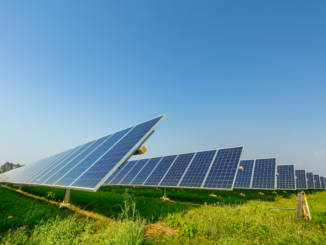
September 26, 2022 by stopthesethings 2 Comments
Spoiler alert: the reason the wind and solar transition must fail is calm weather and sunset. So much, so simple and obvious.
No country has ever powered itself entirely on wind and solar; no country ever will. Anyone telling you otherwise, is either a lunatic or they’re in on the greatest economic and environmental fraud, of all time.
Push them on the hopeless and inherent intermittency of wind and solar and you’ll hear mumblings about giant batteries, as if they’re not only cheap, but readily available – at a scale that will cure the problem in the blink of an eye.
Pure delusion, to be sure. Physics and economics mean that the grid-scale storage of electricity will remain a pipe dream.
The Wall Street Journal’s James Freeman taps into a report from the Manhattan Institute’s Mark Mills which details just how dangerous the wind and solar delusion is.
Why the Energy Transition Will FailWall Street JournalJames Freeman26 August 2022
Even if you’re never hit by a 7-ton blade falling from the night sky, alternative energy will fail you. Regardless of facts or feelings about the climate, there are reasons why wind and solar power are not replacing fossil fuels. Wind and solar are also no substitute for nuclear power.
The government of California can issue as many proclamations and prohibitions as it wants against gasoline-powered vehicles. No doubt the Biden administration will enjoy spending the ocean of tax dollars now earmarked for low-intensity energy sources. But reality will stubbornly remain.
In a new report due out next week from the Manhattan Institute, Mark Mills takes on the “dangerous delusion” of a global energy transition that eliminates the use of fossil fuels. Surveying energy markets and public policy around the world, Mr. Mills asks readers to “consider that years of hypertrophied rhetoric and trillions of dollars of spending and subsidies on a transition have not significantly changed the energy landscape.” He notes:
Civilization still depends on hydrocarbons for 84% of all energy, a mere two percentage points lower than two decades ago. Solar and wind technologies today supply barely 5% of global energy. Electric vehicles still offset less than 0.5% of world oil demand.
Mr. Mills then explains why the global appetite for energy is not heading south:
One can begin with a reality that cannot be blinked away: energy is needed for everything that is fabricated, grown, operated, or moved… digital devices and hardware—the most complex products ever produced at scale—require, on average, about 1,000 times more energy to fabricate, pound for pound, than the products that dominated the 20th century… it takes nearly as much energy to make one smartphone as it does one refrigerator, even though the latter weighs 1,000 times more. The world produces nearly 10 times more smartphones a year than refrigerators. Thus, the global fabrication of smartphones now uses 15% as much energy as does the entire automotive industry, even though a car weighs 10,000 times more than a smartphone. The global Cloud, society’s newest and biggest infrastructure, uses twice as much electricity as the entire nation of Japan. And then, of course, there are all the other common, vital needs for energy, from heating and cooling homes to producing food and delivering freight.
Advocates of a carbon-free world underestimate not only how much energy the world already uses, but how much more energy the world will yet demand… In America, there are nearly as many vehicles as people, while in most of the world, fewer than 1 in 20 people have a car. More than 80% of the world population has yet to take a single flight.
He then proceeds to take on the argument that wind and solar power are now becoming competitive with fossil fuels:
Claims that wind, solar, and [electrical vehicles] have reached cost parity with traditional energy sources or modes of transportation are not based on evidence. Even before the latest period of rising energy prices, Germany and Britain—both further down the grid transition path than the U.S.— have seen average electricity rates rise 60%–110% over the past two decades. The same pattern is visible in Australia and Canada. It’s also apparent in U.S. states and regions where mandates have resulted in grids with a higher share of wind/solar energy. In general, overall U.S. residential electricity costs rose over the past 20 years. But those rates should have declined because of the collapse in the cost of natural gas and coal—the two energy sources that, together, supplied nearly 70% of electricity in that period. Instead, rates have been pushed higher thanks to elevated spending on the otherwise unneeded infrastructure required to transmit wind/solar-generated electricity, as well as the increased costs to keep lights on during “droughts” of wind and sun that come from also keeping conventional power plants available (like having an extra, fully fueled car parked and ready to go) in effect by spending on two grids.
None of the above accounts for the costs hidden as taxpayer-funded subsidies that were intended to make alternative energy cheaper. Added up over the past two decades, the cumulative subsidies across the world for biofuels, wind, and solar approach about $5 trillion, all of that to supply roughly 5% of global energy.
Whether it’s to cool a home, heat steel, or power a data center, the eternal engineering challenge has always been to find the lowest-cost way to make energy available when it’s needed to meet inherently variable demands, especially in the face of inevitable challenges from nature’s attacks as well as supply chain and machine failures. Oil, natural gas, coal, and even wood and water are easy to store in very large volumes at very low cost, but not so electricity. Hence, grid-scale electric availability has been made possible by using electricity-producing machines (turbines) that can be turned on when needed, fueled by large quantities of primary energy sources (such as natural gas, coal, and flowing water) that are easily and inexpensively stored. Such metrics characterize, for now, more than 80% of U.S. electricity production and more than 90% of transportation. The U.S., on average, has about one to two months’ worth of national demand in storage for each kind of hydrocarbon. Such enormous quantities are possible because it costs less than $1 a barrel per month to store oil or the energy equivalent of natural gas. Storing coal is even cheaper. Thus, over the past century, engineers achieved the feat of building a nation-spanning group of electricity grids that powers nearly everything, anytime, while still consuming less than 3% of the GDP.
Storing electricity itself—the output from solar/wind machines—remains extremely expensive despite the vaunted battery revolution. Lithium batteries, a Nobel-winning invention, are some 400% better than lead-acid batteries in terms of energy stored per unit of weight (which is critical for vehicles). And the costs for lithium batteries have declined more than 10-fold in the past two decades. Even so, it costs at least $30 to store the energy equivalent of one barrel of oil using lithium batteries. That alone explains why, regardless of mandates and subsidies, batteries aren’t a solution at grid scales for days, never mind weeks, of storage.
President Joe Biden is unlikely to listen to such an explanation and who knows if he would even understand it. But reality’s not going anywhere.Wall Street Journal



